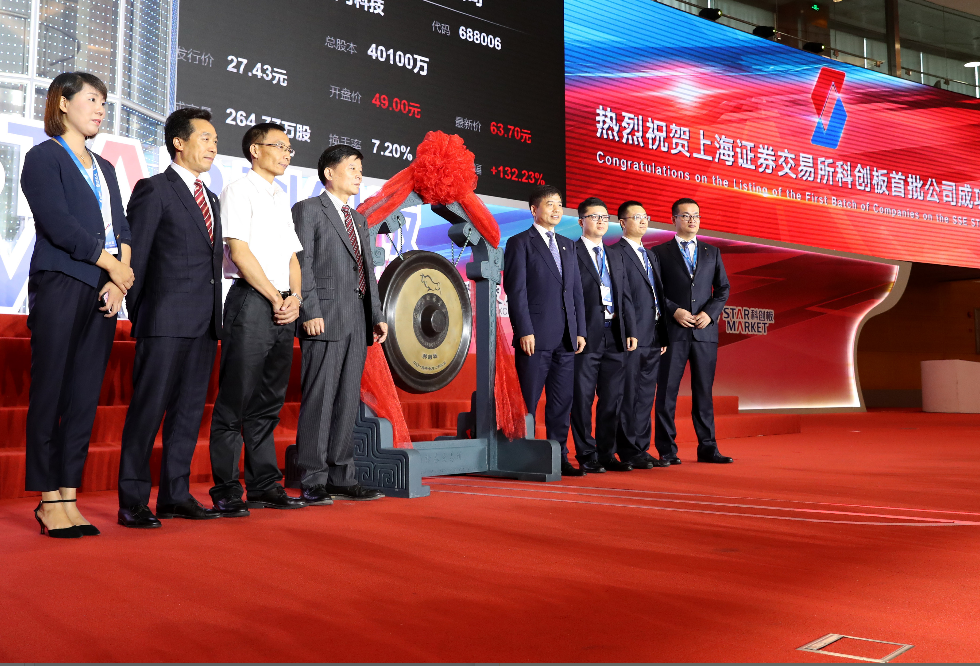BEIJING, July 22 (Xinhua) -- China's Nasdaq-style sci-tech innovation board, known as the STAR Market, on Thursday celebrated its second birthday.
The board was designed to support companies in the high-tech and strategic emerging sectors, in order to facilitate the innovative transformation of the Chinese economy and explore ways to make institutional improvements in the capital market.
For two years, the market has been maturing into a growth engine, kindling the expansion of the country's economy and sci-tech innovation.
The following are facts and figures reflecting the progress of the tech-focused board:
-- On July 22, 2019, the Nasdaq-style high-tech board started trading on the Shanghai Stock Exchange (SSE), kicking off a trailblazing leg of the country's innovation drive and capital market reform.
-- Over 310 firms have been listed on the STAR Market, raising over 380 billion yuan (about 58.78 billion U.S. dollars) via initial public offerings (IPOs). The market's total value is estimated at over 4.7 trillion yuan.
-- As the STAR Market has been gearing up its focus on key and core technologies, firms related to major tech industries accounted for almost 75 percent of all firms listed on the board.
-- Approximately 35.2 percent of companies listed on the STAR Market are related to the new generation of information technology, which includes cloud computing and artificial intelligence. Biomedical firms and those in the high-end equipment manufacturing industries respectively accounted for 23.3 percent and 16.3 percent of the total.
-- The SSE STAR Market 50 component index, a component index reflecting the overall price performance of listed companies on the new board, was released on July 23 last year. As of Tuesday, the index has climbed 25.6 percent from its lowest level.
-- STAR-listed companies have posted steady growth, with their research and development investment levels much higher than the stock market average. In 2020, some 311 firms raked in a total of 466.24 billion yuan, with their net profits attributable to parent companies at over 55.37 billion yuan, market data shows.
-- By Tuesday, approximately 100 STAR-listed companies had released their first-half forecasts, with 67 predicting growth.
-- A frontrunner of registration-based reform in the capital market, the STAR board has seen its review process increase in efficiency, and its listing requirements are becoming more and more inclusive.
-- In a recent guideline to support the high-level reform and opening-up of the Pudong New Area in Shanghai, China announced it would introduce a pilot program in the STAR market that would allow qualified foreign institutional investors to use the yuan to participate in stock offerings. Enditem




 A single purchase
A single purchase









